#National Association for the Advancement of Colored People (NAACP)
Explore tagged Tumblr posts
Text

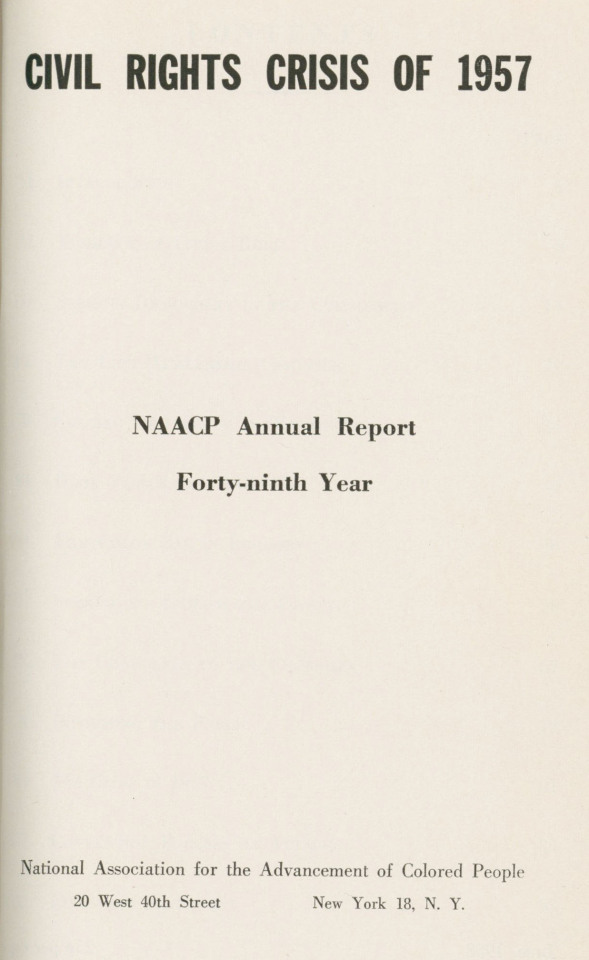
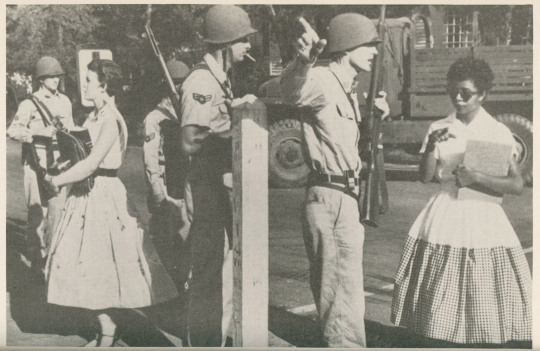
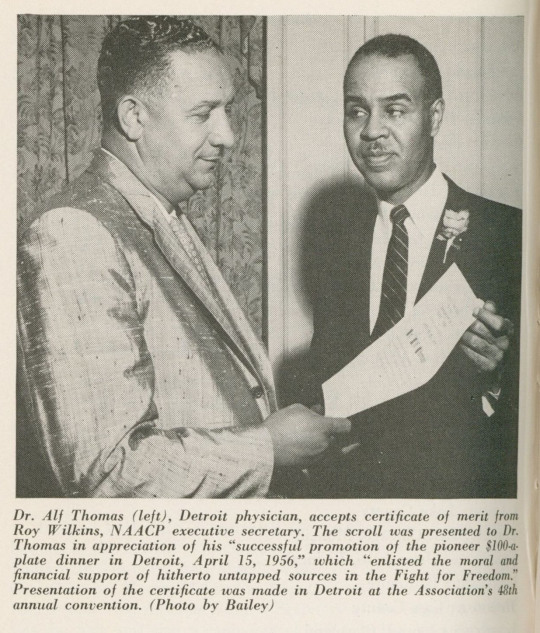
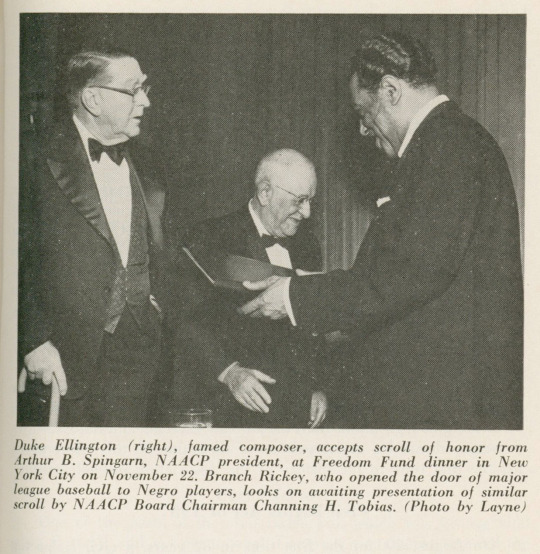
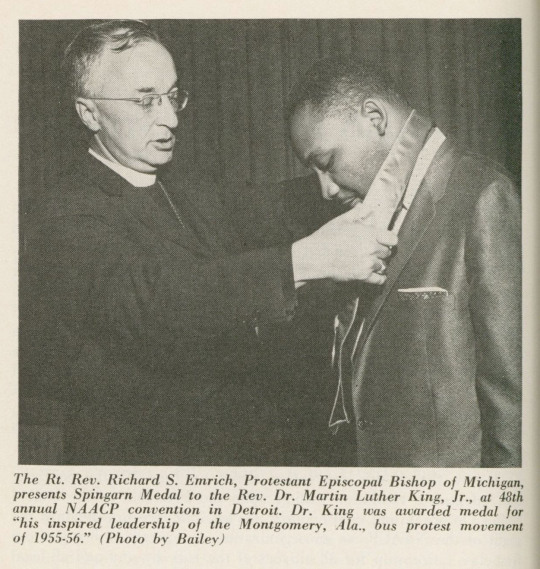
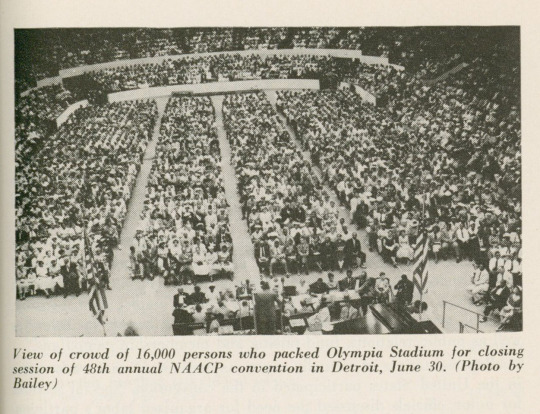
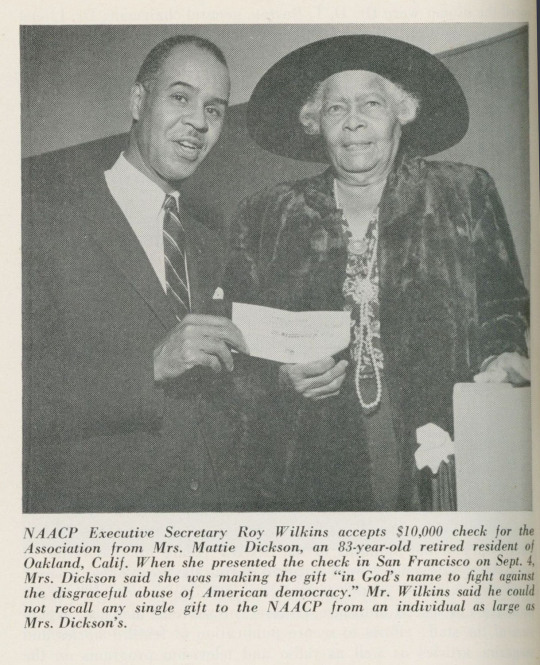
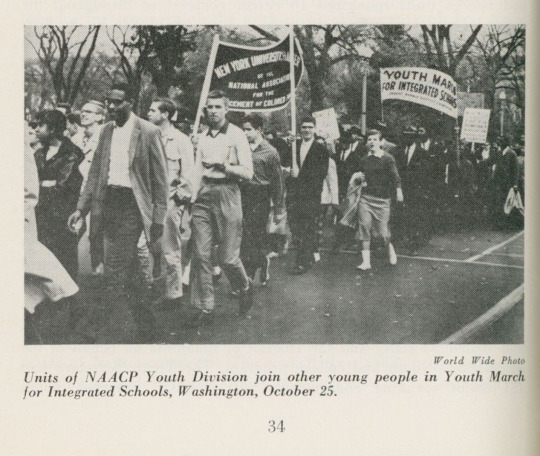
Milestone Monday
February 12th commemorates the founding of the National Association of the Advancement of Colored People (NAACP) established in 1909 as an interracial endeavor to advance justice for African Americans. Over the years, the NAACP’s mission has evolved “to ensure the political, educational, social, and economic equality of rights of all persons and to eliminate race-based discrimination”.
Milwaukee lawyer, Wisconsin state representative, and civil-rights activist Lloyd A. Barbee (1925-2002) devoted most of his life to the NAACP’s mission. Joining the association at just 12 years old Barbee went on to become the president of the Madison branch from 1955-1960 and the Wisconsin chapter from 1961-1964. He was simultaneously earning a law degree and using his prowess as an activist to draft Madison’s Equal Opportunity Ordinance, demand Milwaukee Public Schools end segregation, and ultimately ran and won a seat on the Wisconsin State Assembly from 1965-1977 where he was the only African American in the state legislature.
Browsing the Special Collections stacks in search of materials to honor the day, I came across a quirky item belonging to Lloyd A. Barbee. The book in question is actually four titles Barbee had bound into a single item. The titles include An Outline of the Old Testament, A Hymarx Outline of the New Testament, A Hymarx outline of the Plays of Shakespeare, and NAACP Annual Report 1957-58. Why Barbee had the titles bound together is anyone’s guess, but the NAACP report provides insight into his civil rights passions, including an update on the association’s work with the Wisconsin Industrial Commission to secure Black tradesmen membership within local unions, an effort Barbee would have no doubt contributed to and has annotated with his initials.
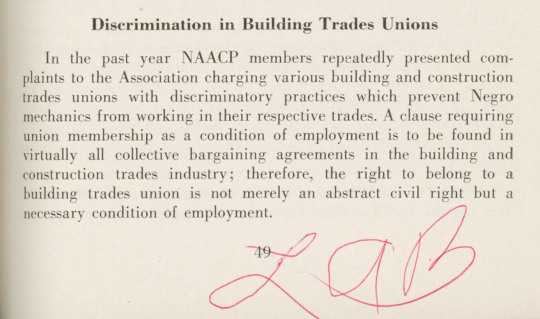
This book is part of the Fromkin Memorial Collection developed around the broad theme of social justice in the United States.
Read other Milestone Monday posts here!
– Jenna, Special Collections Graduate Intern
#milestone monday#NAACP#national association of the advancement of colored people#lloyd a. barbee#fromkin memorial collection#Black History Month#African Americans
12 notes
·
View notes
Text
Body-cam video shows Illinois officer fatally shooting Black woman in face
White deputy Sean Grayson shot Sonya Massey, who called police in fear of a home intruder, after boiling water dispute
Massey, whom her daughter confirmed was paranoid-schizophrenic, had called police because she thought someone was trying to break into her home. When police arrived, they began looking into Massey’s home with flashlights, a neighbor, Cheryl Evans, told the Guardian. Evans wondered why police had not knocked on her door, as they typically have done in the past when searching for suspects. Eventually, Grayson, who is white, and his partner entered the home where they began speaking to Massey. After an initial discussion and request for Massey’s driver’s license,Grayson spotted a pot of boiling water on the stove and ordered Massey to remove it to avoid starting a fire. In doing so, Massey asks the officers – who visibly distance themselves from her as she goes to handle the pot – why they moved away from her. “Where you going?” she asks them. “Away from your hot steaming water,” Grayson answers, with a laugh, before Massey responds: “Away from the hot steaming water? Oh, I’ll rebuke you in the name of Jesus.” With his gun drawn, Grayson closed the distance between himself and Massey, who was beginning to kneel behind a counter with her hands up. “You better fucking not, I swear to God I’ll fucking shoot you right in your fucking face,” Grayson warned. Massey can be heard saying, “I’m sorry,” as Grayson continues to advance. “I’m sorry,” she says again as Grayson fires three shots, striking her with a bullet below the eye that exited from the back of her neck. As Massey lay dying on her kitchen floor, Grayson says he’ll go get his medical kit to render aid. “That’s a headshot. She’s done,” Grayson says before going to get the med kit. As the pair stand there with their guns still drawn, Grayson says: “I’m not taking a bullet out of her fucking head,” then points out that the water from the pot had reached his feet. “What else can we do?” Grayson asks his partner. “I’m not taking hot boiling water to the fucking face.”
[...]
Massey’s death carries on a troubling legacy of racial violence in Springfield: Massey’s family said she is a descendant of William Donnegan, a Black man who was lynched by a white mob but survived during the city’s infamous 1908 race riots that took 17 Black lives over a two-day period in mid-August of that year. As a result of the violence and carnage, a group of white and Black Americans banded together to create the National Association for the Advancement of Colored People (NAACP). Massey’s family said that the irony of having to reach out to the NAACP for help after her killing is not lost on them.
#you don't need to watch the video. the description is more than enough to understand just how sadistic and malicious this was#sonya massey#black lives matter#acab#news#usa#illinois
3K notes
·
View notes
Photo

On this day, 16 July 1862, Black feminist, anti-racist and anti-lynching activist Ida B. Wells was born in Holly Springs, Mississippi. After the lynching murders of three of her friends for the "crime" of setting up a grocery store which competed with a white-owned store she undertook a detailed investigation of lynchings and their causes. Wells' work countered the popular myth that most lynchings were to punish alleged rapists, and showed that instead most were for such "crimes" as failing to pay debts, competing with whites economically or drinking alcohol. She recommended that Black people arm themselves for "protection which the law refuses to give"; she herself bought a pistol after being threatened by white racists. Wells participated in the founding of the National Association for the Advancement of Colored People (NAACP), but later distanced herself from the group after becoming dissatisfied with its leadership made up of the small group of either white or Black members of the elite. Instead she founded the Negro Fellowship League, and later the Alpha Suffrage Club in Chicago, which may have been the first Black women's suffrage organisation. More information, sources and map: https://stories.workingclasshistory.com/article/8788/ida-b.-wells-born https://www.facebook.com/photo.php?fbid=662977452542140&set=a.602588028581083&type=3
1K notes
·
View notes
Text
Things People Seem to Forget About Steve Rogers (aka the past is complex)
Things in the future didn't happen in a vacuum, and while Steve missed a lot of stuff while he was in the ice, he would have seen the roots of things like the Civil Rights, Women's Rights and even LGBTQ+ Rights movements in his time.
While I'm sure Steve encountered a lot of people expecting certain right-wing behaviours from him, due to his birth year and the things he missed in the ice, this doesn't mean he would act that way—even right out of the ice.
But first lets take a look at the things Steve missed and see what he did in fact know:
The atom bomb. Steve never saw the atomic fallout, but what did he see? Hydra bombs literally being flown to his home city. There is also a possibility that as a specialty team, he learned about the German Nuclear Program during the war. His unit was tied to the Strategic Science Reserve, so I wouldn't be surprised if between that, and Hydra's bomb initiatives, Steve was well aware of the potential of a bomb threat. I doubt Steve has clearance to know about the Manhattan project, and I think he would be horrified to learn about the impact of the atom bomb on Japan (especially since he essentially thwarted the same thing from happening to New York) but majorly powerful bombs would not surprise him.
• The Cold War. Steve may not have experience the Cold War, but he grew up surrounded by the outcome of the First World War after the Communist take over of Russia. The debates surrounding Communism, Socialism, and Capitalism aren't new. Steve would have grown up with them and would probably be familiar with American pro-capitalist, anti-communist rhetoric. But would he agree?
Here's some things we know about Steve: He's an artist, he grew up during the Depression which was heavily mitigated by socialist measures, he grew up poor, he grew up disabled. As an artist Steve would be well aware of the debates between the political movements, and with his background, and the success of Roosevelt's New Deal reforms, it would not surprise me if Steve leaned more towards the Socialist side of the scale.
All this to say: Steve would not be unfamiliar with the tension between Russia and the USA. Especially since even though they were allies during the war, there were already concerns that the USSR wasn't so much 'liberating' the countries they drove Germany out of, as putting them under new management.
Steve would be familiar with the tensions underlying the Cold War, and his background might lead him to have a critical view of some of the pro-Capitalist propaganda that came out during the Cold War. While I don't think Steve would approve of Russia's methods and the ultimate outcome of Communism there, I don't think he would approve of the Red Scare Witch Hunt that happened in the States either.
• Civil Rights Movement. While Steve missed the major changes that occurred during the 50s and 60s, he would not be unfamiliar with movements for equality. Steve would also not be unaware of the inequality that minorities faced in his country.
For example:
National Association for the Advancement of Colored People (NAACP) was established in 1909 and is still run today. The NAACP fought and fights against discrimination and advocates for equality.
In the 30s President Roosevelt responded to "to charges that many blacks were the "last hired and first fired," [his administration] instituted changes that enabled people of all races to obtain needed job training and employment. These programs brought public works employment opportunities to African Americans, especially in the North" (Link)
"The first precedent-setting local and state level court cases to desegregate Mexican and African American schooling were decided during [the late 1930s]" (Link)
In 1941 thousands of Black Americans threatened to march on Washington for equal employments rights which pushed Roosevelt to issue an executive order that "opened national defense jobs and other government jobs to all Americans regardless of race, creed, color or national origin." (Link)
The Double Victory or Double V Campaign during the war was an explicit campaign to win the war against fascism in Europe and the war against racism as home.
All this to say, Steve would not be unfamiliar with many of the issues tackled during the Civil Rights Movement of the 50s and 60s.
Not only that, but Steve led a multi-racial special unit during the war during a time of active army segregation. Not only does he have a Black man on his team, but also a Japanese man. This would have most definitely led to backlash from higher command as well as discrimination from other units against Jones and Morita. Steve and the entire Howling Commandos would be explicitly aware of prejudice against two of their members and likely had to fight for them many times.
• Anything space travel. It's true Steve wouldn't know anything about attempts to reach the moon. But there were still several space discoveries he could know about, especially since he and Bucky are clearly interested in scientific discoveries, considering how they went to the Stark Exbo before Bucky shipped out.
Some discoveries:
Hubble's Law: In 1929 Hubble published evidence for an ever expanding universe, and thus provided evidence of the Big Bang theory.
1930: Discovery of Pluto (makes me chuckle to think this is a relatively new discovery for Steve and he wakes up to find it is a dwarf-planet now. You think Millennials are protective of Pluto? I think Steve would be too 😆.)
1937: "the first intimation that most matter in the universe is `dark matter'"
Personally I think Steve would be absolutely amazed by the advances in space travel.
• Women's Rights. Like with Civil Rights, while Steve may have missed the large movements during the 50s and 60s, he was around for the early movements. The 60s movement is called Second Wave Feminism for a reason. This is because there was already many pushes for women equality in Steve's time.
For example:
1920: White women win the right to vote. This means Steve's mother first voted in his lifetime. I feel this alone would make Steve heavily aware of inequality faced by women. (As a side note I feel that Sarah always emphasized voting to Steve since it was such a major development in her lifetime.)
Also in the 20s the Flapper trend rose, along with hemlines. Women's skirts were shorter and they smoked and drank with men. Middle-class and working-class women also worked outside of the home. The 1920s-1930s 'modern' woman is very different from the Victorian vision of a woman in petticoats and skirts.
Early Birth Control movement: Was "initiated by a public health nurse, Margaret Sanger, just as the suffrage drive was nearing its victory. The idea of woman’s right to control her own body, and especially to control her own reproduction and sexuality, added a visionary new dimension to the ideas of women’s emancipation. This movement not only endorsed educating women about existing birth control methods. It also spread the conviction that meaningful freedom for modern women meant they must be able to decide for themselves whether they would become mothers, and when."
1936: A Supreme Court decision declassified birth control information as obscene. Legalised doctor-prescribed contraceptives.
WW2 Watershed: Women serve in the army and work factory jobs. The government establishes universal childcare while women work.
Women also wore pants and form fitting clothes to work in factories. We also see Peggy wearing pants during the last assault on Hydra. While Steve may need to get used to modern fashion, he would already be familiar with the 'morale outrage' over women's clothes in his time, and probably try to manage his surprise in private as well as possible.
�� LGBTQ+ Rights. Like with the rest of the equality movements, LGBTQ+ rights movements also started before the late 1900s.
1924: "Society for Human Rights is founded by Henry Gerber in Chicago. The society is the first gay rights organization as well as the oldest documented in America." This organisation was broken up soon after founding due to arrests, but it published "the first American publication for homosexuals, Friendship and Freedom."
In the 1920s and 30s "the gay and lesbian movement started taking shape. Social analysts began rejecting prior medical definitions of "inversion" or "homosexuality" as deviant.
Communities of men and women with same-sex affiliations began to grow in urban areas. Their right to gather in public places such as bars was tenuous, and police raids and harassment were common." (Link)
WW2 Watershed: While many LGBTQ people lived in rural areas or outside 'queer neighbourhoods' the war brought people from all backgrounds together. "As with most young soldiers, many had never left their homes before, and the war provided them an opportunity to find community, camaraderie, and, in some cases, first loves. These new friendships gave gay and lesbian GIs refuge from the hostility that surrounded them and allowed for a distinct subculture to develop within the military."
They still had to hide their identities for fear of persecution and a 'blue discharge', however "Gay and lesbian veterans of World War II became some of the first to fight military discrimination and blue discharges in the years following the war."
It's unclear how much Steve would have known about the gay and lesbian rights movement. But in the comics he has a gay friend Arnie Roth, and there are many meta posts (X X X) about how Steve may have lived in a queer neighbourhood.
And, according to my history professor, gay and lesbian soldiers were often protected by their friends in the army instead of outed. This is not to downplay the discrimination and pain outed veterans faced, but there was a comaraderie and understanding that developed between soldiers that protected many gay soldiers.
• Computer and the internet. The seeds of modern computers began during World War Two. Arguably it began earlier with Ada Lovelace. While technology has changed a lot for Steve, there is a long history of it's development.
Colossus Computer: Kept secret until the 70s, it's unclear if Steve's association with the SSR, Peggy (who was a code breaker before SSR) and Howard, would have led him to know anything about the "the world's first programmable, electronic, digital computer", but we see electric screens and machines being used in Captain America: The First Avenger. So he would know something of those mechanisms.
Also the first American TV was broadcasted in the 1939 World Fair, And since Steve and Bucky are already shown going to a science fair, I believe it is reasonable for Steve to know about the concept of television, though it looks much different in modern day.
• Rise of Neo-Nazis. Steve already saw the rise of fascism in his own country before the war, so while I think he would be horrified and saddened to learn of the Neo-Nazi movement, I don't think he would be surprised.
Because:
Eugenics: A large part of the Nazi campaign, this part of the movement originated and was inspired by the United States Eugenics movement. "It is important to appreciate that within the U.S. and European scientific communities these ideas were not fringe but widely held and taught in universities."
Lobotomies and institutionalisations were part of the treatments for disabled and 'weak-minded' individuals during Steve's time. With Sarah being a nurse it is likely Steve knew of these treatments and more. And as a disabled child of immigrants, I have no doubts Steve brushed up with eugenics beliefs many times.
1939: More than 20,000 people attended a Nazi rally in Madison Square while "[a]bout 100,000 anti-Nazi protesters gathered around the arena in protest".
In the comics Steve canonically has a Jewish friend, Arnie Roth. If he wasn't part of the protests against the Nazi rally, he would have heard about it and known about the rise of antisemitic sentiment in the US before the outbreak of the war.
So Where Does That Leave Us?
Steve has a history of anti-racist behaviour. While he would still have a lot to learn from the Civil Rights Movement and no doubt has unconscious biases he grew up with, he also explicitly builds a multi-racial team that would have led to clashes with systemic racism in the army. This would have inevitably led to him and the Howling Commandos taking an anti-racist stance in protection of their members.
Would Steve say the N-word? Likely not. The N-Word already held negative connotations by the 19th and early-20th century. I doubt Jones would be willing to follow a man who would knowing use the insult. 'Coloured' or 'Negro' were seen as the more acceptable terms. So Steve may use those words at first, instead of 'Black' or 'African-American'. 'Negro' is a controversial term for some Black Americans, so this would be something for him to learn, but he would not purposely by insulting or hurtful. And I believe he would adapt as quickly as possible upon learning.
Steve saw the early steps of many social movements. Given what we know about Steve—artist, disabled, immigrant, poor, raised by a single mom, gay and Jewish friend, potentially lived around queer people, worked with Peggy and smiled when she punched a sexiest, and built a multi-racial team—Steve would not only be aware of the social movements of his time, but he would be happy to learn of the developments after he went into the ice.
While it would take some time for him to learn all the changes that happened, Steve's background would led him to be pleased with the changes in society. This is the opposite of being racist, sexist, and homophobic. Some things might take some adjusting for Steve to get used to, but he is already open-minded and has a frame of reference for many of the social changes that happened.
People sometimes bring up Steve's Catholic upbringing to argue about some beliefs he might have. But while I do think this upbringing would lead to some biases, I think Steve's life experience helped counter, or helped him unlearn some of those biases, even before he hit the ice.
Also, as an Irish-Catholic, Steve would have faced some discrimination of his own. It is most certainly not on the same level as other minorities, and things were better in the 20th century. Being very clear, any discrimination Steve faced for being Irish-Catholic would not be systemic or commonplace like racism. But adding his heritage to the rest of Steve's background helps give us a better idea of why he was already open to social movements like the Civil Rights movement before the ice. And it may have made him already more understanding of LGBTQ+ people, who he may have lived around, even if he grew up being taught certain biases.
Other Things We Forget About Steve
He is quite tech-savvy. While Steve would have a lot to learn, we know he is capable. There are a lot of jokes about his technical know-how in Avengers, but I think he's actually managing very well considering it's probably only been a few weeks or months since he came out of the ice.
Examples:
Deleted scene where we see Steve using a laptop in his apartment. He presses the spacebar to pause a video, which is a keyboard shortcut. So not only can he set up a laptop to watch a video, but he already knows key shortcuts.
Deleted scene where waitress mentions 'wireless'. Steve is confused and thinks she means radio. But I think he actually knows about wi-fi at this point, but probably had never heard it referred to as 'wireless' before. By this point he knows radio is not as common, so his real confusion is why the waitress is offering him 'free radio'. If she had said free wi-fi (the more typical phrase in my opinion) I think he would have understood.
Canon scene of Steve helping Tony fix the Helicarrier engines. This is my favourite evidence because Tony asks Steve to look at the relays and Steve makes a quip that they 'seem to run on some sort of electricity' indicating he is out of his depth. But we never see Tony tell Steve what to do. Steve figures out how to fix the relays himself. Tony is busy with the debris in the rotors and the next thing we see is Steve telling Tony the relays are all good.
Steve is much better at adapting and figuring out technology than we give him credit for. This doesn't mean he won't be anxious or uncomfortable with the sheer amount of stuff he has to learn (especially if everyone keeps making jokes about it to him). But by 2014, it's clear he's already mastered all of it, which is amazing when you think about it, because that's only two years of learning.
Steve is very book smart. In the comics Steve goes to art college, implying he finished high school. Even if he did drop out of high school to work, we know Steve is very smart.
We see him unloading a whole suitcase of books in the barracks before he got the serum.
The mental math is must take to throw the shield at the right angles for it to bounce back is insane.
Steve is also known as a master tactician. So it is clear he has the brains and smarts to run his team during the war. Not only that, but he is not just Captain in name. He actually has that rank, which means he passed the Captain's exam. I also have a feeling he would have needed to pass some kind of evaluation to get the serum in the first place.
We see in Steve's 2014 apartment that his bookshelves are full of history books. Steve is a veracious reader and spends a lot of his time catching up on what he missed. Things he didn't learn or were taught differently growing up would definitely exist, but Steve is actively working to counter that.
Steve would swear. Swearing has been a constant throughout all of history. So too, the backlash against profanity. Even if Steve grew up being told not to swear he would have heard it. And, Steve became a soldier. If he didn't swear before the war, he most definitely picked up some of it then.
I think Captain America isn't supposed to swear, and I think Steve would be aware of this perception of the symbol of him. But I think when Steve is comfortable with people, he would swear. We see in Avengers he doesn't swear, but in Avengers: Age of Ultron, he does.
We joke about Steve and the "Language" line, but I think that line has something to do with Steve's history of being perceived as a symbol and as Captain America since he said it 'just slipped out'. So, while Steve may have been encouraged not to swear growing up, and expected not to swear as Captain America, I fully believe that soldier, veteran, and Irish man Steve Rogers does swear.
Wrap up
I hope you liked this deep dive into Steve's history and character.
I think it can be easy to take the past as a lump sum and view everyone in the past through one lens. We know the past was racist, sexist, and homophobic, so we view everyone from the past that way.
And while it's true things were different back then, people were most definitely fighting for change and aware of the issues. There is also a lot of nuance to the past, and a lot that can be gleaned from what we know about Steve.
It's true that Steve would have a lot to learn when it comes to terminology and specific technology, but I believe Steve's background would prepare him for a lot of the social changes that happened after he went into the ice.
#steve rogers#meta#deep dive#long post#captain america#historically accurate#research#sources cited#early 20th century#20th century history#20th century#social movements#marvel#mcu#please don't tag the other post#no drama please#iykyk#historically accurate steve rogers
319 notes
·
View notes
Text
Mary Church Terrell

As we celebrate Black History Month, it’s a perfect time to honor the legacy of Mary Church Terrell, a pioneering civil rights and women’s rights activist. Born in Memphis, Tennessee, in 1863, Terrell was among the first African American women to earn a college degree, graduating from Oberlin College. She dedicated her life to fighting for equality and justice, making significant contributions to the suffrage movement and the fight against racial discrimination.
Terell’s commitment to civil rights and women’s suffrage was deeply intertwined with her work in the Black Women’s Club Movement. She served as the first president of the National Association of Colored Women (NACW), which advocated for voting rights and equal rights under the motto “lifting as we climb.” Terrell also played a crucial role in the founding of the National Council of Negro Women (NCNW) and the National Association for the Advancment of Colored People (NAACP).
One of Terrell’s most notable achievements was her involvement in a successful lawsuit in 1950 that led to the desegregation of restaurants in the Washington, DC, area. Terrell’s writings, including “A Colored Woman in a White World,” and “What it means to be Colored in the Capital of the United States,” have left a lasting impact on the struggle for racial and gender equality.
To explore more about Mary Church Terrell’s remarkable life and contributions, the National Archives offers additional resources here:
A Portrait of Mary Church Terrell: A glimpse into the grace and determination of the iconic figure https://www.archives.gov/research/african-americans/individuals/mary-church-terrell
Blogs related to Mary Church Terrell: Delve into detailed articles that explore various aspects of her life and legacy Rediscovering Black History Blog. https://rediscovering-black-history.blogs.archives.gov/
Unceasing Militant: The Life of Mary Church Terrell with Alison M. Parker: A recorded event that sheds light on Terrell’s multifaceted activism, held on December 17, 2020. https://www.youtube.com/watch?v=XQYQRKKBr0A&embeds_referring_euri=https%3A%2F%2Fwww.archives.gov%2Fresearch%2Fafrican-americans%2Findividuals%2Fmary-church-terrell&embeds_referring_origin=https%3A%2F%2Fwww.archives.gov&feature=emb_title
External: https://www.linkedin.com/pulse/labor-love-restoration-ledroit-parks-mary-church-ee8xe/?trackingId=V7zIYQZE9YI5JgfRfOS4xg%3D%3D
#national archives#history#nationalarchives#black history month#bhm#african american history#mary church terrell
250 notes
·
View notes
Text
instagram
joyannreid
Repost from @hyperallergic On Thursday, December 5, an autonomous group of activists boarded the F train at the Broadway-Lafayette Street/Bleeker Street subway station in Manhattan to replace the adverts displayed throughout the car with one message: “A man was lynched here.” The protesters’ phrasing references a banner the National Association for the Advancement of Colored People (NAACP) displayed outside its office in New York between 1920 and 1938 to acknowledge the lynching of African Americans. It calls attention to Jordan Neely, a 30-year-old unhoused Black man and Michael Jackson impersonator who was killed on May 1, 2023, during a six-minute chokehold at the hands of Daniel Penny, a Marine veteran from Long Island who was 24 at the time. Penny apprehended Neely from behind on an F train between the Second Avenue and Broadway-Lafayette Street/Bleeker Street stops after Neely reportedly made multiple threatening remarks, behaved erratically, and threw items at other passengers. The action came days after closing arguments in Penny’s trial. On December 6, the judge dismissed the second-degree manslaughter charge, which carried up to 15 years in prison, after the jury deadlocked twice. Earlier today, Penny was found not guilty of criminally negligent homicide.
#black lives matter#blacklivesmatter#lynching#murder#assassination#current events#white privelage#black men#black people#white privilege#justice system#racial injustice#racism#Instagram
19 notes
·
View notes
Text
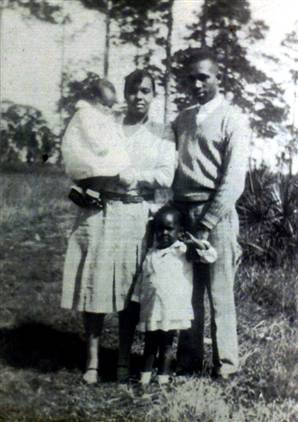
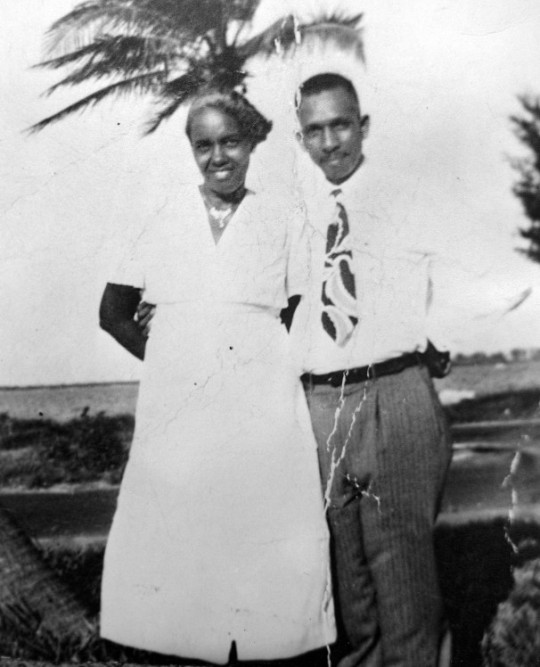

On Christmas Day of 1951, it was the 25th wedding anniversary of Harry and Harriette Moore from Mims, Florida. The couple were pioneer activists and lead re of the early civil rights movement in the United States. Unbeknownst to them, later on that night, they would become the first martyrs of the movement.
In 1934, Harry founded the Brevard County, Florida, National Association for the Advancement of Colored People (NAACP) chapter. NAACP worked towards achieving equal pay for equal work for teachers of any race and fought to have lunching prosecuted and attempted to register voters of colour in the region. Harry saw some success during the nascent civil rights movement; voters of colour doubled in Florida during the last half of the 1940s and lawsuits started to be filed to challenge the policy of paying teacher of colour less than their white counterparts.
Due to their civil rights activity, both Harry and Harriette were fired from the school where they both worked. Orange County was a hotbed of racism and violence during the 1940s and early 1950s; the Orange County Ku Klux Klan was gaining popularity and turning more violent by the day.
On that fateful Christmas afternoon, Harry and Harriette had celebrated their anniversary with Harry’s mother and their 24-year-old daughter. They spent the evening eating cake and chatting. At around 10:15PM, the couple climbed into bed and switched off the light. Moments later, there was an almighty explosion; somebody had planted 3 pounds of dynamite under the bedroom floor of the couple.
The force of the dynamite tore open the floor and slammed the mattress to the ceiling before crashing back down. The bedroom was completely obliterated, the front porch had been shredded and the frame of the house destroyed.Harry died on the way to Stanford hospital in the back of a relative’s Buick; Stanford hospital was the closest hospital that would treat people of colour. Harriette died nine days later due to massive internal injuries; she lived long enough to see her husband be buried.
When police arrived at the scene, a sniffer dog picked up a scent which led to nearby Dixie Highway before abruptly stopping. Sure enough Sheriff H.T. Williams found footprints alongside the scent but since he walked through them, the plaster imprint made was useless. Officially, the murders remain unsolved but according to FBI documents, the Orange County Ku Klux Klan are responsible.
Four suspects were known high ranking members of the Ku Klux Klan: Earl J. Brooklyn, Tillman H. Belvin, Joseph Cox and Edward L. Spivey. Despite the evidence against them, no arrests were ever made and all four main suspects are now deceased.
53 notes
·
View notes
Text
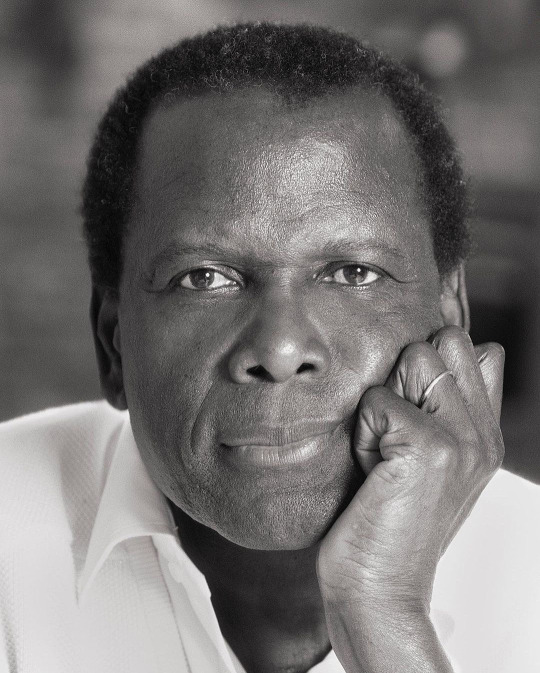
Today In History
Both an esteemed actor and a respected humanitarian, Sidney Poitier received an Academy Award for Best Actor for Lilies of the Field on this date April 13, 1964. Poitier was the first African American to receive an Oscar for a leading role.
By consistently refusing to play the stereotypical roles that were offered to him as an African American actor, Poitier blazed a trail for himself and the performers who followed him.
By the time he earned a Best Actor Oscar nomination for The Defiant Ones (1958), his work in such films as The Blackboard Jungle (1955) had made him America’s first prominent African American film star.
With his historic Oscar win for Lilies of the Field, Poitier became only the second African American to win an Academy Award. The first was Hattie McDaniel, who won in the Best Supporting Actress category in 1939 for Gone with the Wind. McDaniel played Mammy, the enslaved governess to the spoiled Southern belle Scarlett O’Hara. Critics of the film, including the National Association for the Advancement of Colored People (NAACP), pointed to the role as an example of the typical Black stereotypes that Hollywood was keeping alive.
CARTER™️ Magazine
#sidney poitier#carter magazine#carter#historyandhiphop365#wherehistoryandhiphopmeet#history#cartermagazine#today in history#staywoke#blackhistory#blackhistorymonth
53 notes
·
View notes
Text

"Our mother has also behind the scene setting forth those motherly cares, the lack of which leaves a missing link in life." --Martin Luther King, Jr., from a 1950 essay while at Crozer Theological Seminary
It occurs to me that no comprehensive observance of Martin Luther King Day is truly possible without at least some understanding of the man's formative years. Accordingly I'm devoting today's lesson to the study of --and deep appreciation for-- the life and the accomplishments of his mother, Alberta Williams King. The dual tragedies of both her son's murder and her own, often cloud the merits of the lives that came before.
Born in 1904 Atlanta, Georgia, Alberta Christine Williams was herself the only surviving child of Jennie Celeste Williams and the Rev. Adam Daniel Williams of the Ebenezer Baptist Church in Atlanta (yes, that very church, which probably merits an entire entry of its own). Alberta earned a teaching certificate from what is now known as Hampton University in 1924, and married her longtime boyfriend Michael (later Martin) King, Sr. on Thanksgiving Day, 1926. She had intended to embark on a career in teaching but, at the time, the local school board did not permit married women to teach. The couple lived in the Williams home and had three children: Willie Christine (later Farris), born in 1927; Michael (later Martin) Jr., in 1929; and finally Alfred Daniel ("A.D."), in 1930. Martin Jr., would later write at length about his close bond with his mother, and also about the unusual closeness to his two siblings, and would even playfully recollect that his father Martin Sr. "happens to be the kind who just won't argue." While justifiably proud of her children, Alberta was by no means content to settle solely into the life of a mother, and earned her BA from Morris Brown College in 1938. By this time her husband had succeeded his father-in-law as the pastor of Ebenezer Baptist, and had begun using the name Martin --as did his namesake. Alberta had confidently stepped the role of a pastor's wife and not only directed the choir but would also serve as its organist, from 1932 to literally the rest of her life.
Perhaps more significantly than even her church life, though, was her active membership in the NAACP (National Association for the Advancement of Colored People) and the Women's International League for Peace and Freedom. No stranger to the cause of civil rights, Alberta and her husband marched as early as 1930, in protest against segregation laws and Black voter suppression. It is sometimes asserted (even today!) that "true Christians" by definition cannot possibly be advocates for social justice because that would conflict with their beliefs --a bad-faith and frankly racially-motivated argument; one usually put forward by white people whose status quo is being inconvenienced, or who are having their narrative challenged. Alberta was having NONE of that, and her commitment to equal justice under the law clearly had an impact on her children --particularly her eldest son! In the years following Martin, Jr.'s ordination and his emergence into the public spotlight, Alberta frequently appeared alongside her famous son at many of his public appearances, became a target of many of the same threats, and unapologetically advocated for improved voting rights and an end to segregation.
This instillation was clear in her Alberta's other two children as well --perhaps to the surprise of no-one, in the wake of his older brother's April 4, 1968 assassination, youngest sibling Rev. Alfred Daniel (A.D.) solemnly stepped into the role of pastor of Ebenezer Baptist, but horrifyingly this tenure would not last --A.D. drowned in a swimming pool accident a mere fifteen months later. Thus bearing the agonizing weight of now having buried both of their sons, Alberta and Martin Sr. quietly began to step away from public life, but renewed their commitment to their church and of continued service to humankind.
But worse was still to come.
\While playing the organ during Sunday services at her beloved Ebenezer Baptist, on June 30, 1974, Alberta was shot (martyred, really) by a self-proclaimed "Hebrew Israelite" assassin with an unreasoning hate for Black ministers. She, along with another church deacon, died later that day at Grady Hospital. She was just shy of the age of 70. "I thought I had made it through the worst days of my life, recounts daughter Christine King Farris. "I was wrong."
Now more than 40 years after her murder, there has been a renewed interest in Alberta' role as the "First Lady" of civil rights, and a desire to not gloss over her legacy, and what she represented. Visit Alberta's page at the Martin Luther, King, Jr. Research and Education Institute, at: https://kinginstitute.stanford.edu/king-alberta-williams
#black lives matter#black history#ebenezer baptist#martin luther king#mlk#alberta king#naacp#teachtruth#dothework
10 notes
·
View notes
Text
Brian Bennett at Time:
President Biden drew a parallel on Friday between Donald Trump “and his MAGA Republican allies” and segregationists in the 1950s who tried to prevent Black and white Americans from going to school together.
Speaking to Black leaders gathered at the National Museum of African American History and Culture, Biden described meeting with some of the nine people who faced racist jeers and abuse to attend Little Rock's Central High School in 1957, three years after the Supreme Court ruled segregation in education was unconstitutional. Biden said the same animus that drove segregationists to try to block those students from attending high school with white students is now emerging in “other insidious forms” such as the efforts to gut affirmative action in college admissions and strip away corporate initiatives trying to bring more people of color into workplaces. “The Little Rock Nine were met with vitriol and violence. Today the vitriol comes in other insidious forms—an extreme movement led by my predecessor and his MAGA Republican allies, backed by an extreme Supreme Court that gutted affirmative action in college admissions. My predecessor and his extreme MAGA friends are now going after diversity, equity and inclusion all across America,” Biden said. “They want a country for some —not for all.”
Biden joined the National Association for the Advancement of Colored People (NAACP) to commemorate the 70th anniversary of the 1954 Brown v Board of Education decision that led to a wave of integration across the country. But even after that ruling, local segregationist leaders in many states flouted the court ruling. In an iconic showdown, President Dwight D. Eisenhower sent 101st Airborne Division troops to Little Rock, Arkansas to protect Black students facing violent threats as they attended school. “My name’s Joe Biden and I’m a lifetime member of the NAACP,” he said, as he started his remarks. He then joked, “When I said that a little earlier to the president, he said, ‘Are your dues paid up?’ I got to check.” Biden’s speech was part of a push to engage the African American community at a moment when his approval ratings are sagging among young Black voters. Later on Friday, Biden met at the White House with presidents of the “Divine Nine,” the influential network of Black sororities and fraternities. “I know real power when I see it,” Biden said of the Divine Nine.
At a speech Friday commemorating the 70th anniversary of Brown v. Board of Education, President Joe Biden (D) rightly draws a parallel between the modern-day MAGA cult and the segregationists of years past.
27 notes
·
View notes
Text
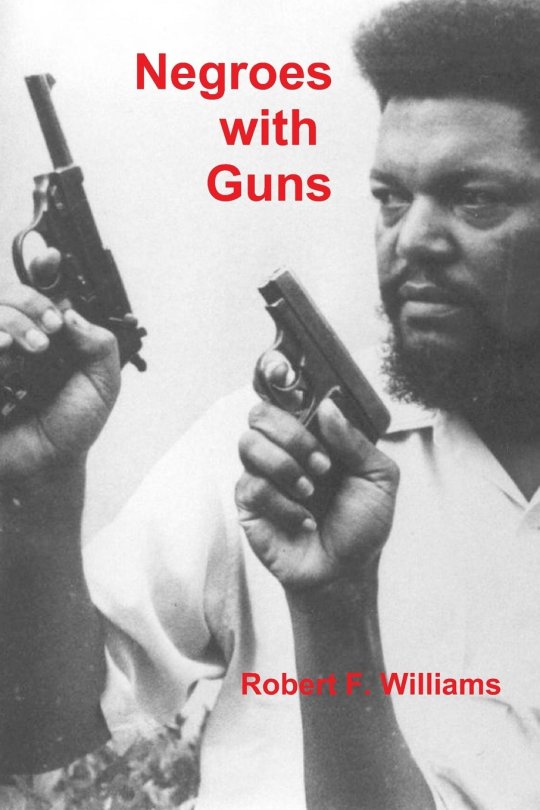
Negroes with Guns - Robert F. Williams
click the title link to Download for FREE from The BLACK TRUEBRARY
Negroes with Guns is a 1962 book by civil rights activist Robert F. Williams. Timothy B. Tyson said, Negroes with Guns was "the single most important intellectual influence on Huey P. Newton, the founder of the Black Panther Party".
The book is used in college courses and is discussed in debates. Negroes with Guns was Williams' experience throughout the Civil Rights Movement of Monroe, North Carolina.
Because black rights were constantly violated, the self-defense policy was born, with Williams saying there was a need to "meet violence with violence." However, Williams claimed that black militants were not promoting violence, but were combating it, believing in self-defense and not aggression.
youtube
NEGROES WITH GUNS: Rob Williams and Black Power tells the dramatic story of the often-forgotten civil rights leader who urged African Americans to arm themselves against violent racists. In doing so, Williams not only challenged the Klan-dominated establishment of his hometown of Monroe, North Carolina, he alienated the mainstream Civil Rights Movement, which advocated peaceful resistance.
For Williams and other African Americans who had witnessed countless acts of brutality against their communities, armed self-defense was a practical matter of survival, particularly in the violent, racist heart of the Deep South.
As the leader of the Monroe chapter of the National Association for the Advancement of Colored People (NAACP), Williams led protests against the illegal segregation of Monroe’s public swimming pool. He also drew international attention to the harsh realities of life in the Jim Crow South.
All the while, Williams and other protestors met the constant threat of violence and death with their guns close at hand. In August 1961, the Freedom Riders, civil rights activists trained by Martin Luther King, Jr. to lead non-violent resistance, came to Monroe to demonstrate the superiority of passive resistance. An angry mob turned on the protestors and, by the end of the day, the Freedom Riders had been bloodied, beaten and jailed, and Rob Williams was on the run from the FBI.
Backed by a jazz score by Terence Blanchard (Barbershop and the films of Spike Lee), NEGROES WITH GUNS uses interviews, rare archival footage and searing photographs to chronicle Williams’ rise to notoriety, his eight-year exile in Cuba and Mao Zedong’s China and his much-publicized return home in 1969. Voices include historians, members of Williams’ Black Guard—armed men committed to the protection of Monroe’s black community—and Williams’ widow, Mabel. For eight years, Williams and his family lived in exile, first in Cuba and then in China.
In Havana, Williams began to broadcast a 50,000-watt radio program called "Radio Free Dixie." Selected recordings are featured in NEGROES WITH GUNS. The radio show fused cutting-edge music with news of the black freedom movement and Williams’ editorials, which, among other things, urged blacks not to fight in Vietnam.
In exile from 1961 to 1969, at the height of the American Civil Rights Movement, Rob Williams and his accomplishments have been largely erased from the public consciousness. According to the filmmakers, NEGROES WITH GUNS helps to “restore Rob and Mabel Williams to their rightful place as important civil rights figures who defied the white power structure without the protection of large numbers or the attention of television cameras.”
click the title link to Download for FREE from The BLACK TRUEBRARY
#Negroes with Guns - Robert F. Williams#Robert F Williams#RNA#Republic of New Africa#Black Self Defense#Mabel Williams#Black Freedom Fighters#Youtube
19 notes
·
View notes
Text
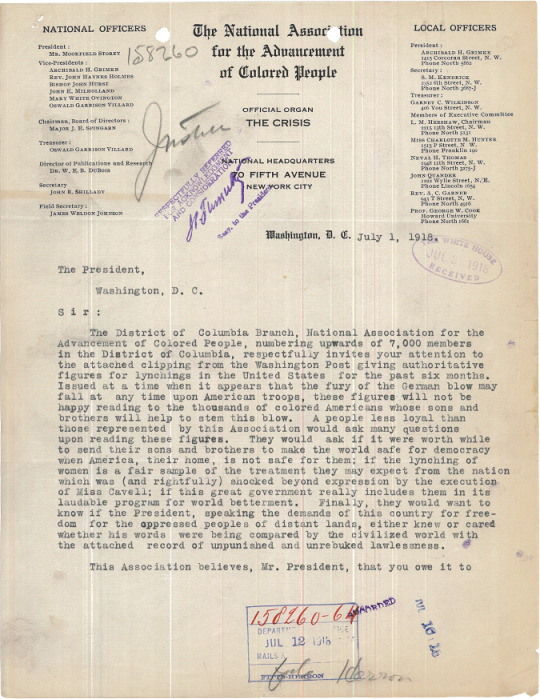

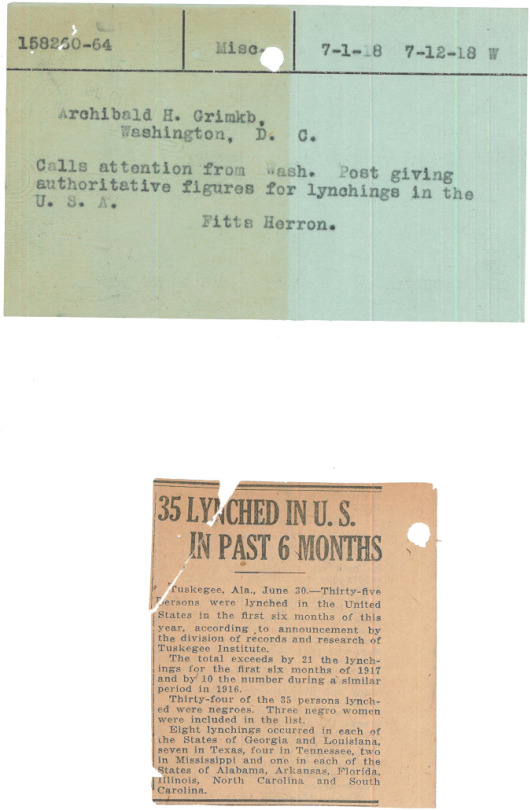
The DC branch of the NAACP brought lynching statistics to the attention of President Wilson on July 1, 1918.
“[African Americans might] ask if it were worth while to send their sons and brothers to make the world safe for democracy when America, their home, is not safe for them . . . “
Record Group 60: General Records of the Department of Justice Series: Straight Numerical Files File Unit: 158260
Transcription:
[[left aligned]]NATIONAL OFFICERS
President:
MR. MOORFIELD STOREY
Vice-Presidents:
ARCHIBALD H. GRIMKE
REV. JOHN HAYNES HOLMES
BISHOP JOHN HURST
JOHN E. MILHOLLAND
MARY WHITE OVINGTON
OSWALD GARRISON VILLARD
Chairman, Board of Directors:
MAJOR J. E. SPINGARN
Treasurer:
OSWALD GARRISON VILLARD
Director of Publications and Research
DR. W. E.B. DUBOIS
Secretary
JOHN R. SHILLADY
Field Secretary:
JAMES WELDON JOHNSON [[left aligned]]
[[centered]]The National Association for the Advancement of Colored People
OFFICIAL ORGAN
THE CRISIS
NATIONAL HEADQUARTERS
70 FIFTH AVENUE
NEW YORK CITY
WASHINGTON, D.C. [[centered]]
July 1, 1918
The President,
Washington, D.C.
Sir:
The District of Columbia Branch, National Association for the Advancement of colored People, numbering upwards of 7,000 members in the District of Columbia, respectfully invites your attention to the attached clipping from the Washington Post giving authoritative figures for lynchings in the United States for the past six months. Issued at a time when it appears that the fury of the German blow may fall at any time upon American troops, these figures will not be happy reading to the thousand of colored Americans whose sons and brothers will help to stem this blow. A people less loyal than those represented by this Association would ask many questions upon reading these figures. They would ask if it were worth while to send their sons and brothers to make the world safe for democracy when America, their home, is not safe for them; if the lynching of women is a fair sample of the treatment they may expect from the nation which was (and rightfully) shocked beyond expression by the execution of Miss Cavell; if this great government really includes them in its laudable program for world betterment. Finally, they would want to know if the President, speaking the demands of this country for freedom for the oppressed peoples of distant lands, either knew or cared whether his words were being compared by the civilized world with the attached record of unpunished and unrebuked lawlessness.
This Association believes, Mr. President, that you owe it to
[page 2]
The President - Sheet 2
yourself to express your disapprobation pf the lynching of colored men and women. We gather from the press that you are to deliver a speech on the 4th of July. May we suggest that this would be a fitting time to include in your remarks some assurance of your belief that the lynching of colored people should no longer be tolerated in this country.
Respectfully.
DISTRICT OF COLUMBIA BRANCH
National Association for the Advancement of colored People
By: Archibald H. Grimke (Signed)
President
[page 3]
158250-64 Misc. 7-1-18 7-12-18 W
Archibald H. Grimke
Washington, D.C.
Calls attention from Wash.Post giving authoritative figures for lynchings in the U.S.A.
Fitts Herron
(The article from the Washington Post)
Tuskegee, Ala., June 30 -- Thirty-five Persons were lynched in the United States in the first six months of this year, according to announcement by the division or records and research of Tuskegee Institute.
The total exceeds by 21 the lynchings for the six months of 1917 and by 10 the number during a similar period in 1916.
Thirty-four of the 35 persons lynched were negroes. Three negro women were included in the list.
Eight lynchings occurred in each of the States of Georgia and Louisiana, seven in Texas, four in Tennessee, two in Mississippi and on in each of the States of Alabama, Arkansas, Florida, Illinois, North Carolina and South Carolina.
#archivesgov#July 1#1918#1910s#Wilson administration#World War I#WWI#lynching#NAACP#Black history#African American history
87 notes
·
View notes
Text
by Morton A. Klein
Do black Jewish lives matter? How about the lives of non-Jewish black African students and black Jewish Ethiopian-Israelis brutally murdered by Hamas and by Gazan civilians? Or the lives of a black Jew and Bedouin Muslim who Hamas has held in captivity for a decade? Or the lives of any of the dark-skinned Jews that make up about half of Israel’s population? Or any Jewish lives? Apparently, Derrick Johnson, president of the pro-black civil-rights group, the National Association for the Advancement of Colored People (NAACP), doesn’t think so. When did the NAACP start making foreign policy decisions? Did it ever scream about the hundreds of thousands of truly innocent civilians in Syria, Iraq, Yemen, Iran and elsewhere being massacred?
The Zionist Organization of America is appalled that on June 6, Johnson issued a press statement demanding that U.S. President Joe Biden indefinitely halt all weapons and ammunition deliveries to Israel, and pressure Israel to stop Israel’s Gaza operations aiming to recover the hostages and prevent Hamas from attacking Israel again. The Gaza-based terror organization has vowed to repeat its Oct. 7 atrocities again and again until Israel is annihilated. The NAACP president’s statement is an anti-civil rights abandonment and betrayal of black Jews, other Jews of color and the entire Jewish people who continue to be victimized, tortured and attacked by the U.S.-designated foreign terrorist group.
Adding insults to injury, the NAACP president parroted Hamas’ false, grossly overstated casualty figures (whitewashed as “UN figures”) and misleadingly blamed an Israeli airstrike in which Israel used the smallest possible ordnance to kill two senior Hamas terrorists in Rafah for Gazan casualties caused by a Hamas weapons stockpile catching fire more than one mile away. In addition, Johnson merely called Oct. 7 a “tragedy” while calling the war in Gaza “unspeakable violence affecting innocent civilians, which is unacceptable.”
Johnson has it backwards. He failed to mention that Oct. 7 was the “unacceptable, unspeakable violence against innocent civilians” in which Hamas and Gazan civilians massacred and tortured innocent Jewish babies, children and civilians from several dozen countries in the most horrific manners imaginable. He didn’t even mention the victims or the perpetrators.
On Oct. 7, Ethiopian-Israeli Samuel Golima, a soldier, and police officer Orel Abraham, both Jewish, were killed while fighting Hamas terrorists that invaded Israel. Yet NAACP’s president wants to disarm brave black Israeli soldiers like them—the defenders of innocent people against Hamas. Moreover, Hamas murdered at least 10 Ethiopian Jews on that horrific day. What about them?
Israeli towns where large numbers of Ethiopian Jews reside, such as Sderot and Ashkelon, have been longstanding, prime targets of Hamas’s tens of thousands of rocket attacks against Israeli civilians in the past 20 years. Yet the NAACP president wants to end Israel’s ability to eliminate the Hamas perpetrators of these terrible attacks.
On Oct. 7, Hamas also took two black Tanzanian agricultural students (Joshua Mollel and Clemence Felix Mtenga) who were on an exchange program in Israel and brutally murdered them. Why doesn’t the NAACP president scream about this? And why does he demand that Biden should disarm Israel so that Hamas can do this again?
Hamas also captured Ethiopian-Israeli Jewish hostage Avera Mengitsu a decade ago. Mengitsu is believed to still be in Gaza. Why hasn’t the NAACP president been calling this unspeakable and demanding that Biden reinstate maximum sanctions on the terror group’s funder: Iran?
9 notes
·
View notes
Text
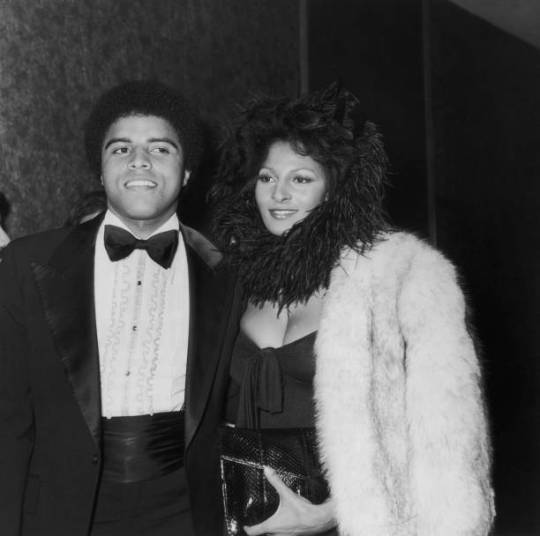
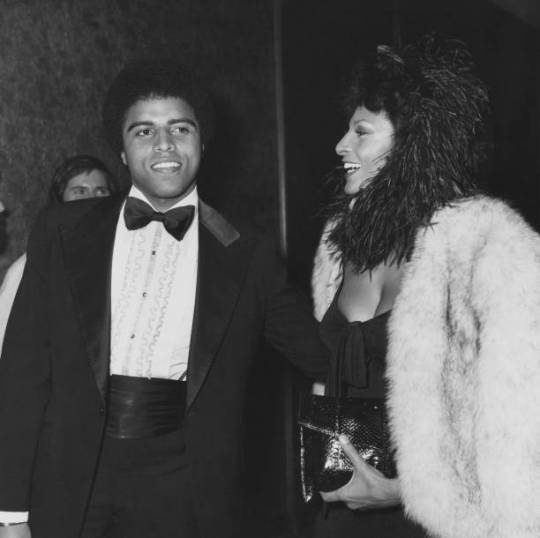
American actor Rodney Grier and his sister, American actress and singer Pam Grier attend the 7th NAACP (National Association for the Advancement of Colored People) Image Awards, held at the Hollywood Palladium in Los Angeles, California, 19th January 1974. (Photo by Frank Edwards/Fotos International/Archive Photos/Getty Images)
9 notes
·
View notes
Text

Encyclopedia of American Race Riots [2 volumes]: Greenwood Milestones in African American History [2 volumes] Illustrated Edition
Click the title to download free, and please share it
2008 Ida B. Wells and Cheikh Anta Diop Award for Outstanding Scholarship in Africana Studies
2007 Choice Outstanding Academic Title
Race riots are the most glaring and contemporary displays of the racial strife running through America's history. Mostly urban, mostly outside the South, and mostly white-instigated, the number and violence of race riots increased as blacks migrated out of the rural South and into the North and West's industrialized cities during the early part of the twentieth-century.
Though white / black violence has been the most common form of racial violence, riots involving Asians and Hispanics are also included and examined. Race riots are the most glaring and contemporary displays of the racial strife running through America's history. Mostly urban, mostly outside the South, and mostly white-instigated, the number and violence of race riots increased as blacks migrated out of the rural South and into the North and West's industrialized cities during the early part of the twentieth-century.
While most riots have occurred within the past century, the encyclopedia reaches back to colonial history, giving the encyclopedia an unprecedented historical depth.
Though white on black violence has been the most common form of racial violence, riots involving other racial and ethnic groups, such as Asians and Hispanics, are also included and examined.
Organized A-Z, topics include: notorious riots like the Tulsa Riots of 1921, the Los Angeles Riots of 1965 and 1992; the African-American community's preparedness and responses to this odious form of mass violence; federal responses to rioting; an examination of the underlying causes of rioting; the reactions of prominent figures such as H. Rap Brown and Martin Luther King, Jr to rioting; and much more. Many of the entries describe and analyze particular riots and violent racial incidents, including the following:
Belleville, Illinois, Riot of 1903 Harlem, New York, Riot of 1943 Howard Beach Incident, 1986 Jackson State University Incident, 1970 Los Angeles, California, Riot of 1992 Memphis, Tennessee, Riot of 1866 Red Summer Race Riots of 1919 Southwest Missouri Riots 1894-1906 Texas Southern University Riot of 1967
Entries covering the victims and opponents of race violence, include the following:
Black Soldiers, Lynching of Black Women, Lynching of Diallo, Amadou Hawkins, Yusef King, Rodney Randolph, A. Philip Roosevelt, Eleanor Till, Emmett, Lynching of Turner, Mary, Lynching of Wells-Barnett, Ida B.
Many entries also cover legislation that has addressed racial violence and inequality, as well as groups and organizations that have either fought or promoted racial violence, including the following:
Anti-Lynching League Civil Rights Act of 1957 Economic Opportunity Act of 1964 Ku Klux Klan National Association for the Advancement of Colored People (NAACP) Nation of Islam Vigilante Organizations White League Other entries focus on relevant concepts, trends, themes, and publications.
Besides almost 300 cross-referenced entries, most of which conclude with lists of additional readings, the encyclopedia also offers a timeline of racial violence in the United States, an extensive bibliography of print and electronic resources, a selection of important primary documents, numerous illustrations, and a detailed subject index.
click the title to download - free, and please share it
#Encyclopedia of American Race Riots#American Riots#Black Uprisings#american hate#white supremacy#documents of lynching
35 notes
·
View notes
Photo
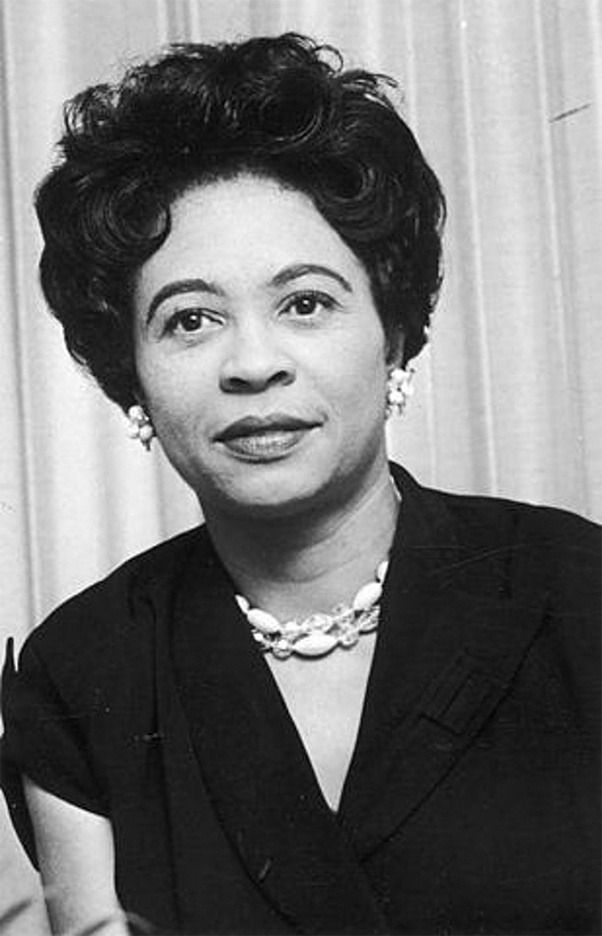
Daisy Bates - played a leading role in the Little Rock Integration Crisis of 1957
After having learned at 8 years old that her mother was brutally raped and murdered by three European men, Daisy Bates dedicated her life to fighting inequality. She was an American civil rights activist, journalist, lecturer, and a woman who played a leading role in the Little Rock Integration Crisis of 1957. When she was just 15, Daisy met her future husband and settled in Little Rock, Arkansas where they started their own newspaper, The Arkansas Weekly. It was one of the only African American newspapers solely dedicated to the Civil Rights Movement. Daisy, naturally, also worked with Civil Rights organizations. She was the President of the Arkansas chapter of the National Association for the Advancement of Colored People (NAACP) for many years. After the Supreme Court ruled segregated schools unconstitutional back in 1954, Daisy began gathering African American students to enroll in European schools. Those who didn't want to accept African students were published in her newspaper. Even though she faced a lot of rejection, Daisy never backed down
#african#daisy bates#intergration crisis#little rock#arkansas#african american#european#kemetic dreams
58 notes
·
View notes